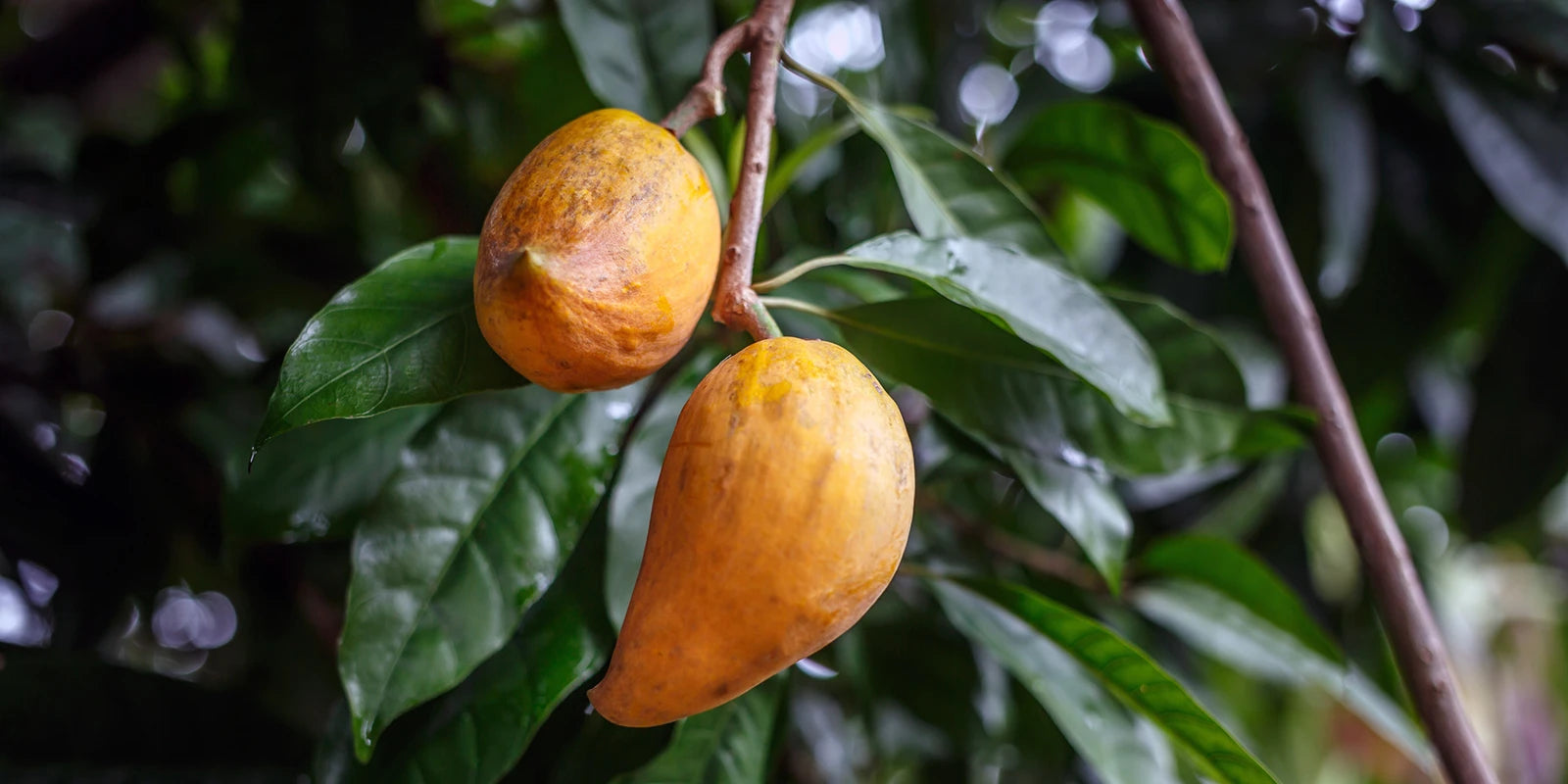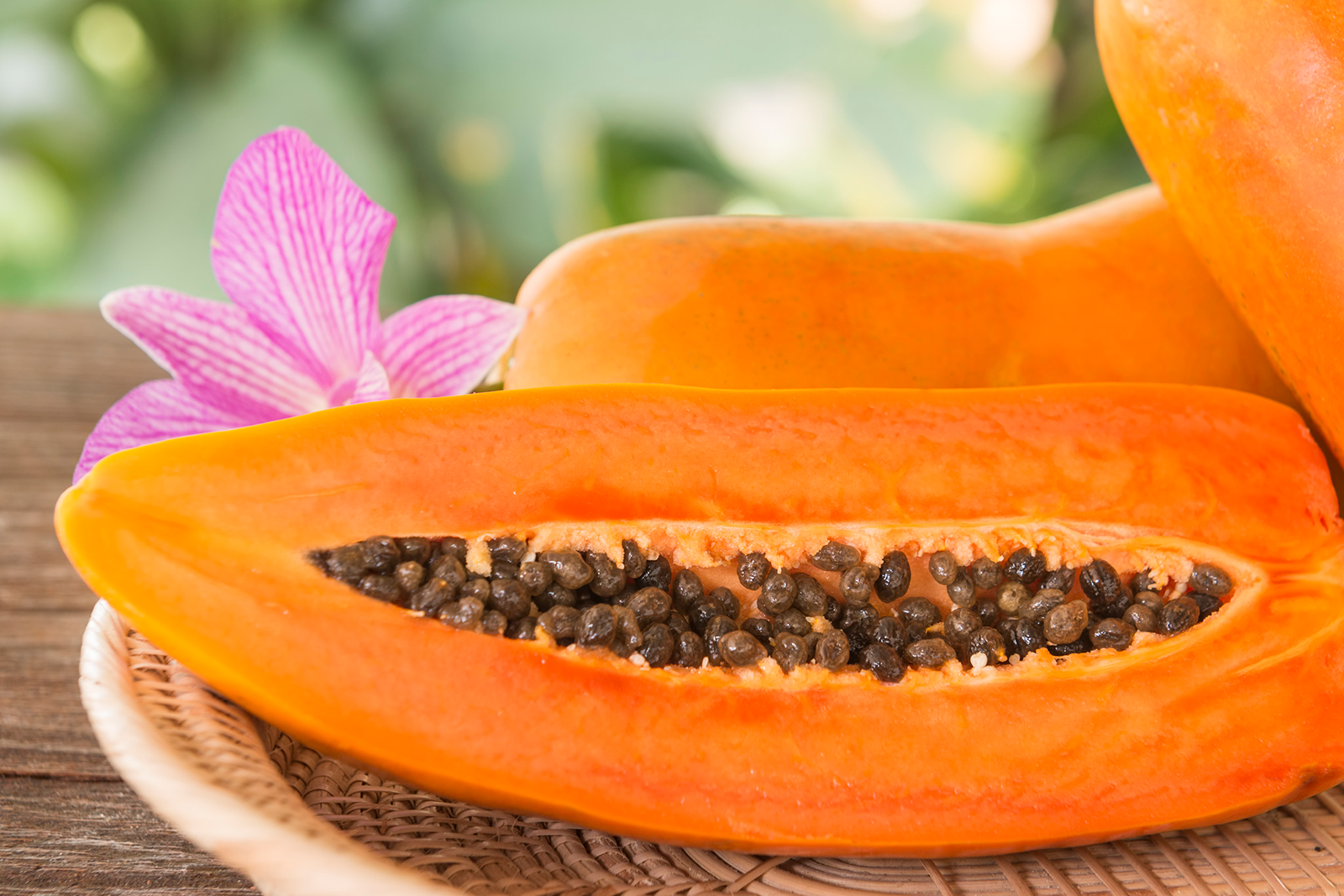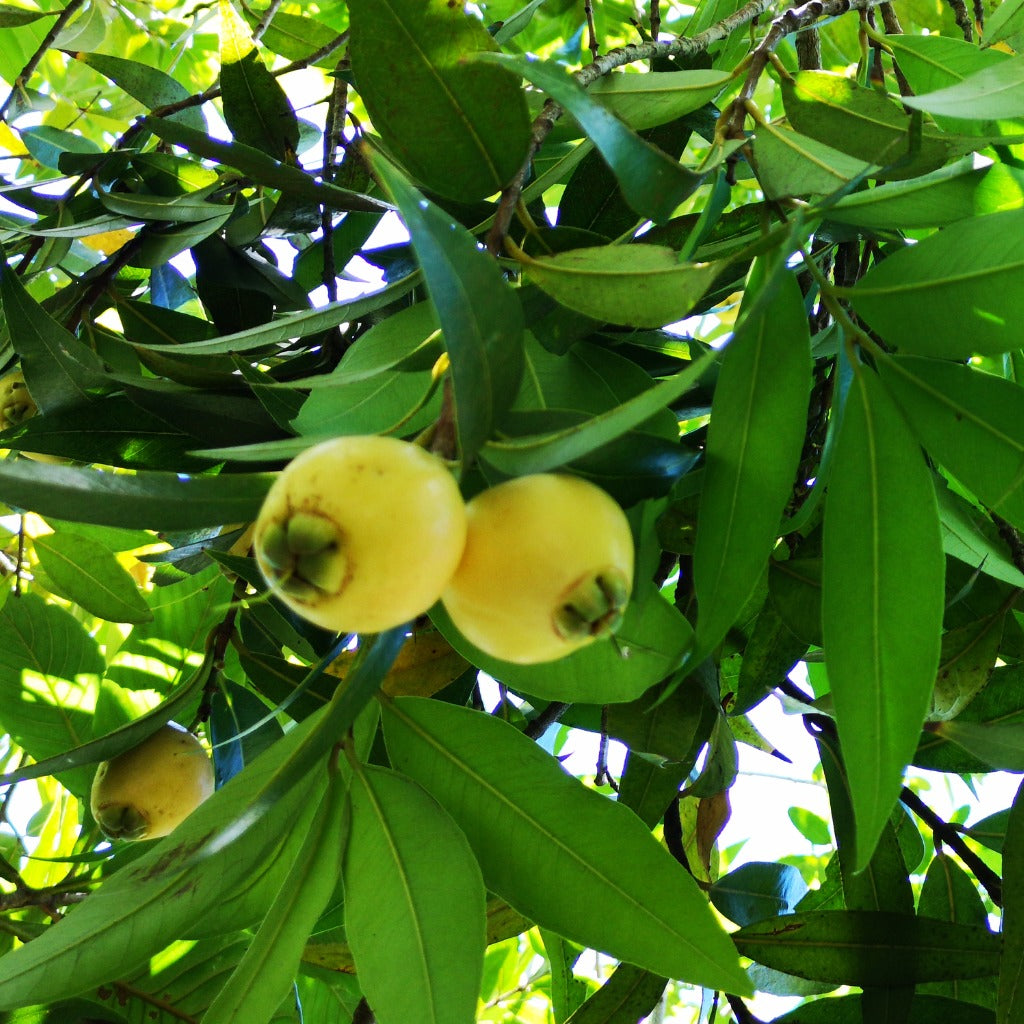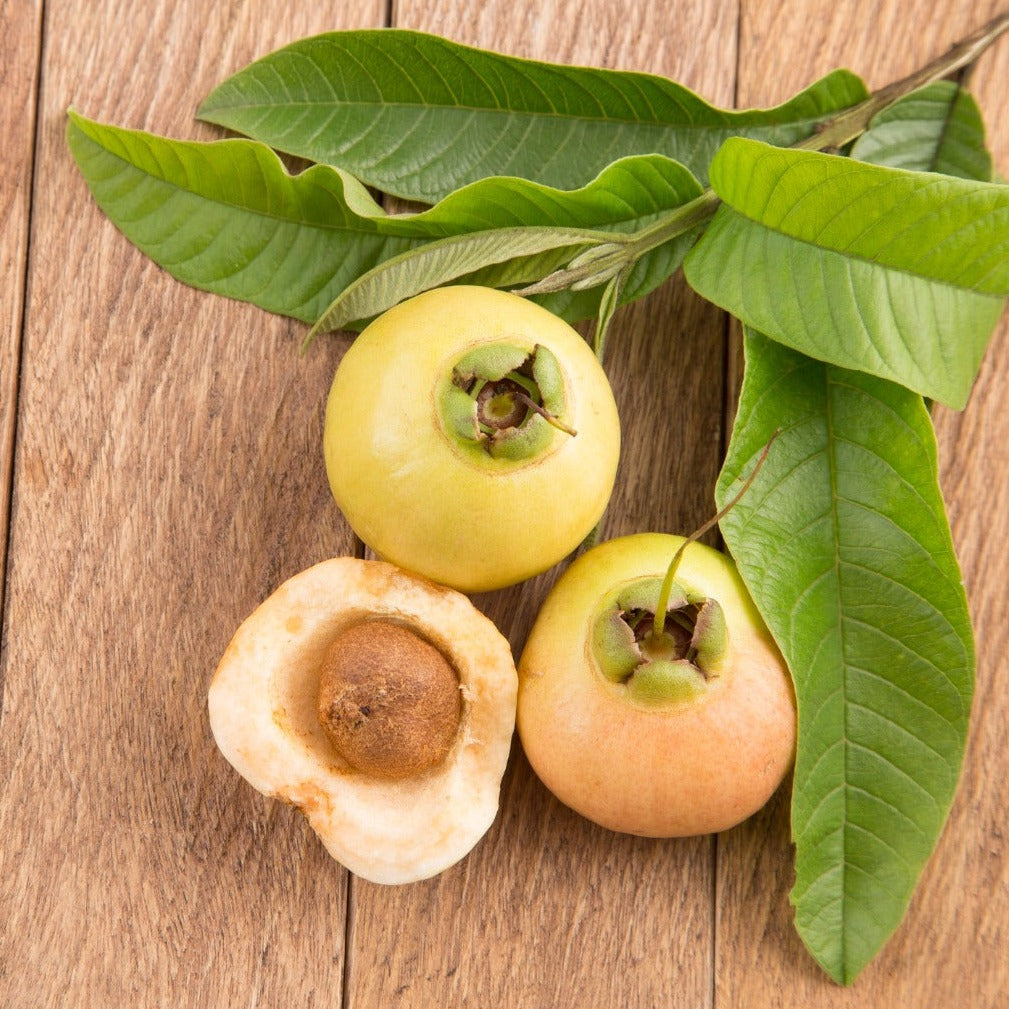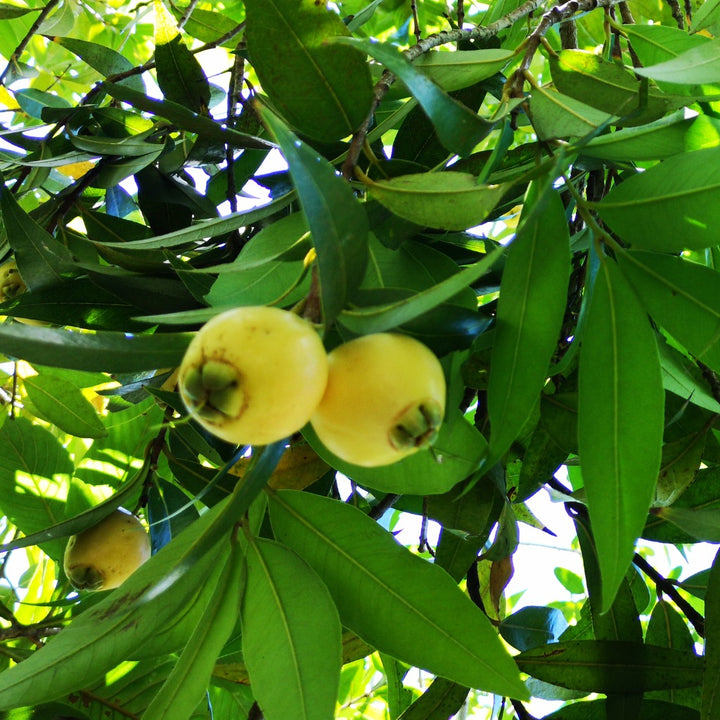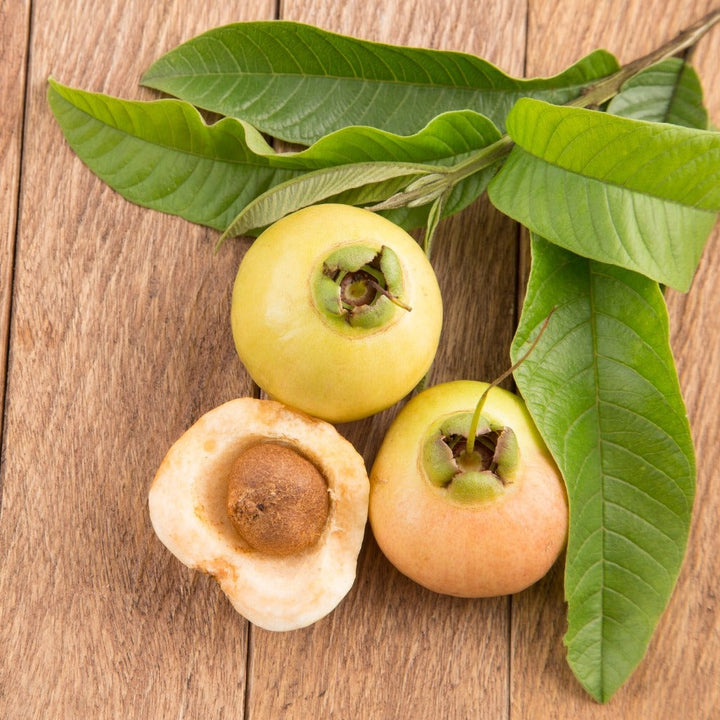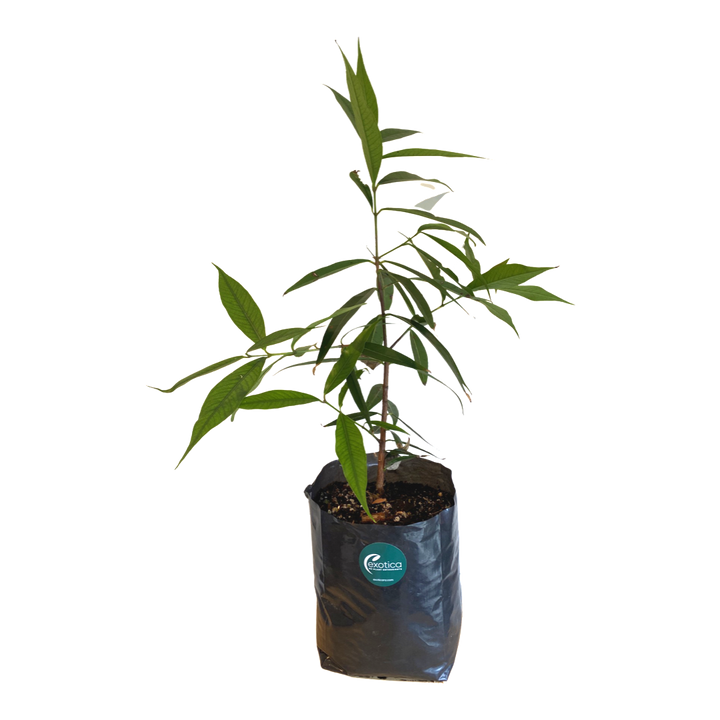Rose Apple
Rose Apple (Syzygium jambos)
The Rose Apple is one of many interesting fruits that, technically, is not an apple. The name Rose Apple can apply to any member of the Syzygium family that bears fruit.
This apple has both an interesting texture as well as a unique flavour. The texture of this fruit is very similar to that of a watermelon. It has a yielding flesh with a high water content making it incredibly juicy.
After you bite into a Rose Apple, you’ll first notice it’s interesting and fruity flavour. The Apple initially has a very sweet taste that has some citrus notes later on.
One thing you’ll notice about the eating experience is the interesting floral flavour that this fruit possesses. You might be able to guess this from its name, but many people say that this tastes like rose!
While this fruit might not be a true apple, it’s still one of the most delicious fruits to bear the name.
Rose Apples are native to Malaysia. They are one of the many fruits that bears the name apple, but it’s not part of the malus domestica family.
European fruit naming conventions often use the name apple to label any fruit that is close enough in resemblance to the malus domestica. Rose Apple, as a common name, applies to a variety of fruits from the same family.
These fruits are notoriously tricky to grow which makes the Rose Apple tree something of a specialty.
Small: 6-12 months
Medium: 1-2 years
Large: 2 years +
Plant Care
- Soil: Prefers rich, loamy, well-drained soil with a neutral to slightly acidic pH.
- Watering: Water deeply and regularly to keep the soil consistently moist, especially during hot, dry periods.
- Temperature: Thrives in warm tropical to subtropical climates, typically between 20°C and 30°C. Protect from frost.
- Light: Full sun is ideal but can tolerate partial shade.
- Fertilising: Fertilize with a balanced NPK formula like 10-10-10 every three months during the growing season.
- Pruning: Prune to shape the tree and encourage airflow, which is essential for reducing disease risk.
- Mulching: Apply organic mulch around the base to retain moisture, suppress weeds, and keep roots cool.
- Pest Control: Susceptible to pests such as aphids and borers. Regular monitoring and appropriate treatments are necessary.
- Flowering and Fruiting: Produces fragrant white flowers followed by rose-flavored fruits that are typically ready to harvest in the summer.
- Potting: Suitable for large containers with adequate drainage. Frequent watering and nutrient supplementation are crucial in container settings.
- Feeding Regime: Additional potassium during the fruiting season can enhance fruit sweetness and yield.
We ship our plants and garden supplies throughout New Zealand. Due to the increased costs of shipping and packaging, we now apply a delivery charge. After offering free shipping for three consecutive years, we find it necessary to adjust this policy to align with current market conditions. However, we have lowered our prices to help offset this change.
Please note, we do not ship plants or garden supplies internationally from New Zealand. We do export plants and tissue culture materials from our overseas nursery, which requires a minimum order. Please contact us at hello@exoticanz.com to discuss your specific requirements.
Shipping (plants) from:
North Island Urban $25
North Island Rural $35
South Island Urban $25
South Island Rural $35
Shipping Garden Supplies:
North Island Urban $20
North Island Rural $25
South Island Urban $35
South Island Rural $45
Delivery
- Our plants are available for shipment from September to April, depending on stock levels. Typical delivery times range from 5 to 7 business days, although they can take up to 10 business days depending on the destination.
- We take extra care in packaging; most of our plants are secured in bespoke inserts and shipped in individual boxes to ensure they arrive undamaged.
- Deliveries are scheduled once a fortnight, typically on Monday. If you place your order over the weekend, we aim to dispatch your plants on the following Monday. This scheduling allows our team to prepare your order thoroughly and ensures the courier has sufficient time to deliver your plants safely, avoiding any unnecessary delays over the weekend.
- All orders are shipped via courier track and trace service (not signature required)
- We cannot deliver to PO Box addresses.
- If you have a rural address, please contact us beforehand to discuss the best delivery options and avoid any potential issues.
Additional Delivery Information
- Most plants are shipped with soil. During the cooler months, we closely monitor weather conditions and may temporarily delay shipments if the weather is particularly severe. Our packing process includes adding insulation when necessary to protect the plants against temperature extremes.
- In summer, we ensure that plants are thoroughly watered before they leave our nursery. Occasionally, we may need to ship plants bare-rooted, particularly when they cannot be comfortably re-potted into smaller packaging for shipping. We will always discuss this with you in advance if your plant needs to be shipped in this manner.
- It's important to note that shipping can be a stressful experience for plants, often due to spending several days in a dark, confined space. While most plants withstand this with little to no stress, some may experience leaf drop. However, they generally recover quickly with some additional care, including proper watering and gradual reintroduction to light after arrival.





